Its founder was Archduke Ferdinand II, a great lover of arts and science, who transformed the castle into a museum that houses the Ambras collections.
The existing medieval fortress was transformed into a Renaissance residential castle, which Ferdinand II gave as a refuge to his wife, Philippine Welser.
The Archduke was supposed to marry a Portuguese or French princess, but being in love with Philippine Welser, the daughter of a mere merchant, he married her in secret.
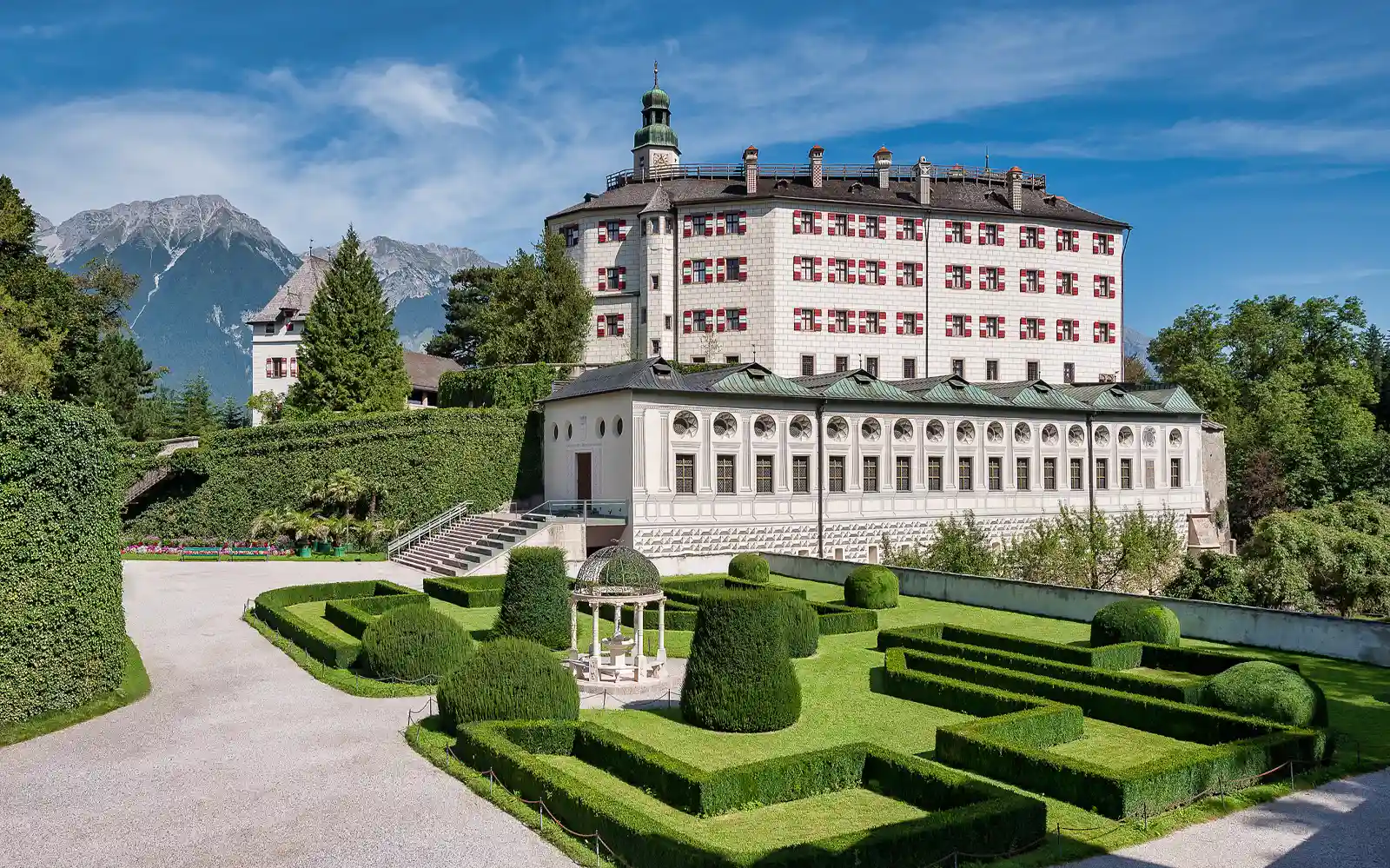
She lived hidden in the castle, known to many as the Archduke's mistress, and their children were excluded from any titles by the rest of the Habsburg clan. After their eldest son, Andreas, managed to become a cardinal, the two received official permission from the pope to reveal their marriage.
I entered the park which during the lifetime of Archduke Ferdinand II, was richly arranged with fish ponds, aviaries, and a modern garden, divided into nine areas, in the center of which stood a round gazebo with columns and an onion-shaped roof.
The hosts of the castle garden are the peacocks, who roam the grounds undisturbed, still from the time of Ferdinand II.
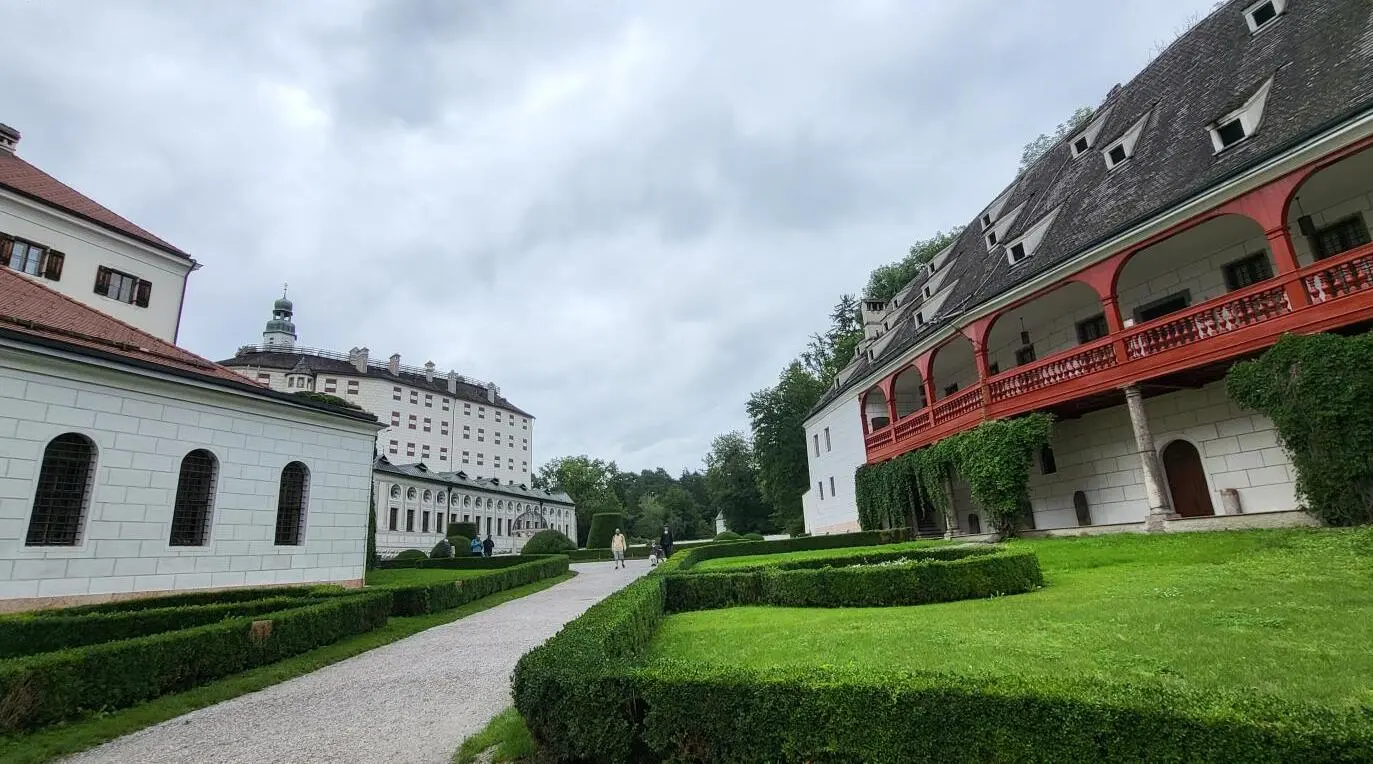
The castle consists of two main buildings and a garden. While the Upper Castle or Hochschloss was designed as a residential building and was transformed and extended into a Renaissance castle, the Archduke planned to set up an exhibition space in the Lower Castle (Unterschloss), which made Ambras Castle the first museum in the world.
Today, the Upper Castle houses the Habsburg Portrait Gallery, spread over three floors, featuring a collection of over 200 portraits. The castle also hosts a collection of late medieval sculptures, and the centerpiece is the Altar of Saint George, which belonged to Emperor Maximilian I.
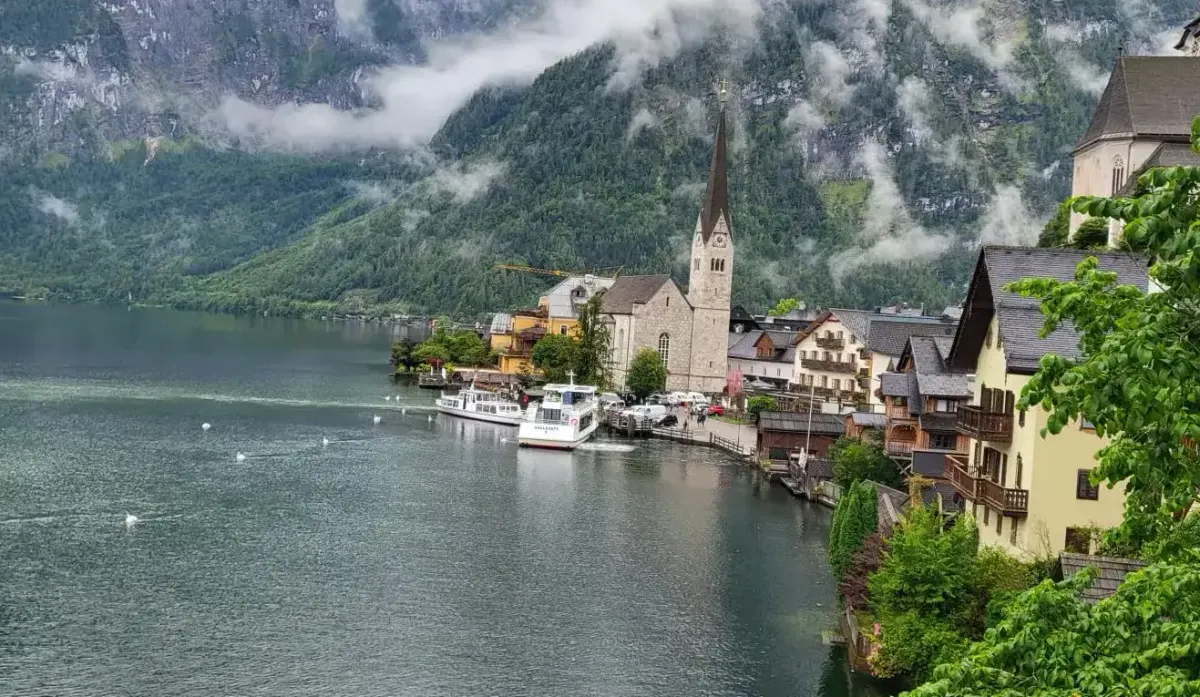
The Lower Castle or Unterschloss attempts to recreate the original concept of the museum, with a large part of the archduke's collection being admired in the three Armoury Rooms, the Chamber of Art and Curiosities, and the Hall of Antiquities.
Another spectacular site is the Spanish Hall, designed for balls and festivals at Ambras Castle, built following the archduke's ideas.
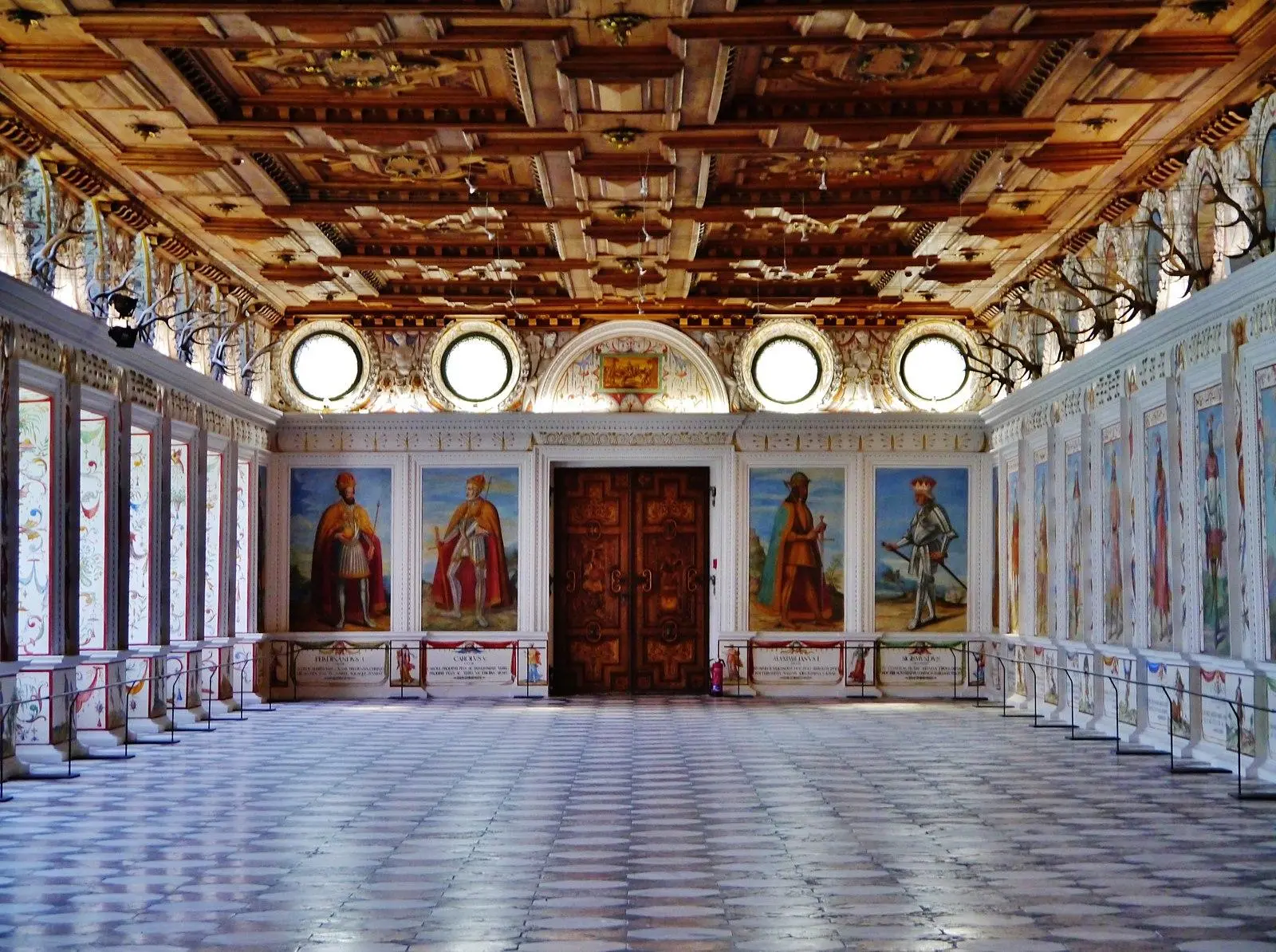
It impresses with its dimensions: 43 meters in length and 13 meters in width, with the largest self-supporting wooden inlaid ceiling in Europe, original frescoes, and 27 full-figure portraits of Tyrolean leaders.
I would have enjoyed visiting the inside of the castle, but we arrived late, so we were content with just the exterior. The Upper Castle, on the facade of the inner courtyard, is decorated with 16th-century grisaille paintings.
The unusual gray murals, made on still-wet plaster, tell various stories about princely virtues, muses, heroes, and heroines.
We continued our visit in Innsbruck, which has preserved its medieval old town with late Gothic style houses.
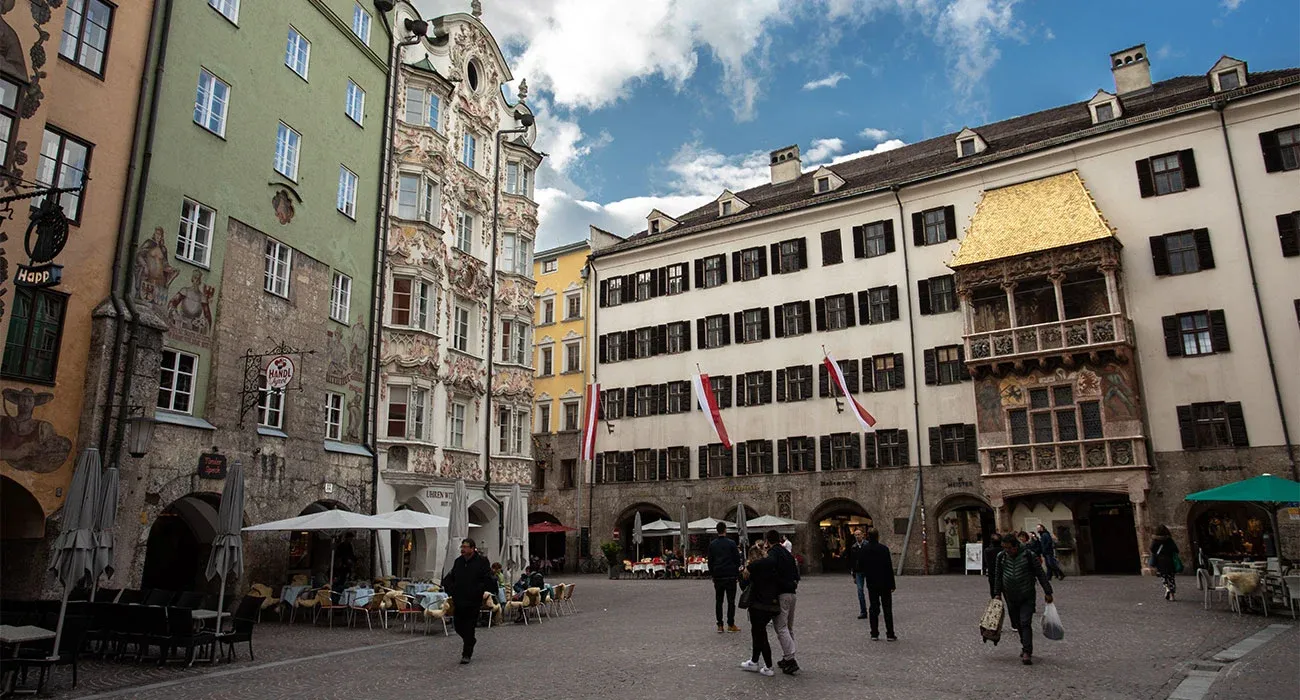
The Roman-inspired Triumphal Arch, richly decorated with artistic marble reliefs, is located at the end of Maria-Theresien-Straße. It was built in 1765 at the request of Empress Maria Theresa of Austria, in honor of the marriage of her son, Archduke Leopold II, to Maria Louise of Spain.
However, it is equally a symbol of joy and sadness, commemorating both a happy and a sorrowful event. During the wedding festivities, Maria Theresa's husband, Emperor Francis I, died.
Therefore, the southern side features elements celebrating the wedding theme, while the northern side presents mourning motifs to commemorate the sudden death of the emperor.
On Herzog-Friedrich Street, at the corner of Pfarrgasse, is another famous landmark, easily accessible to visitors, known as the "Golden Roof" or “Goldenes Dachl”.
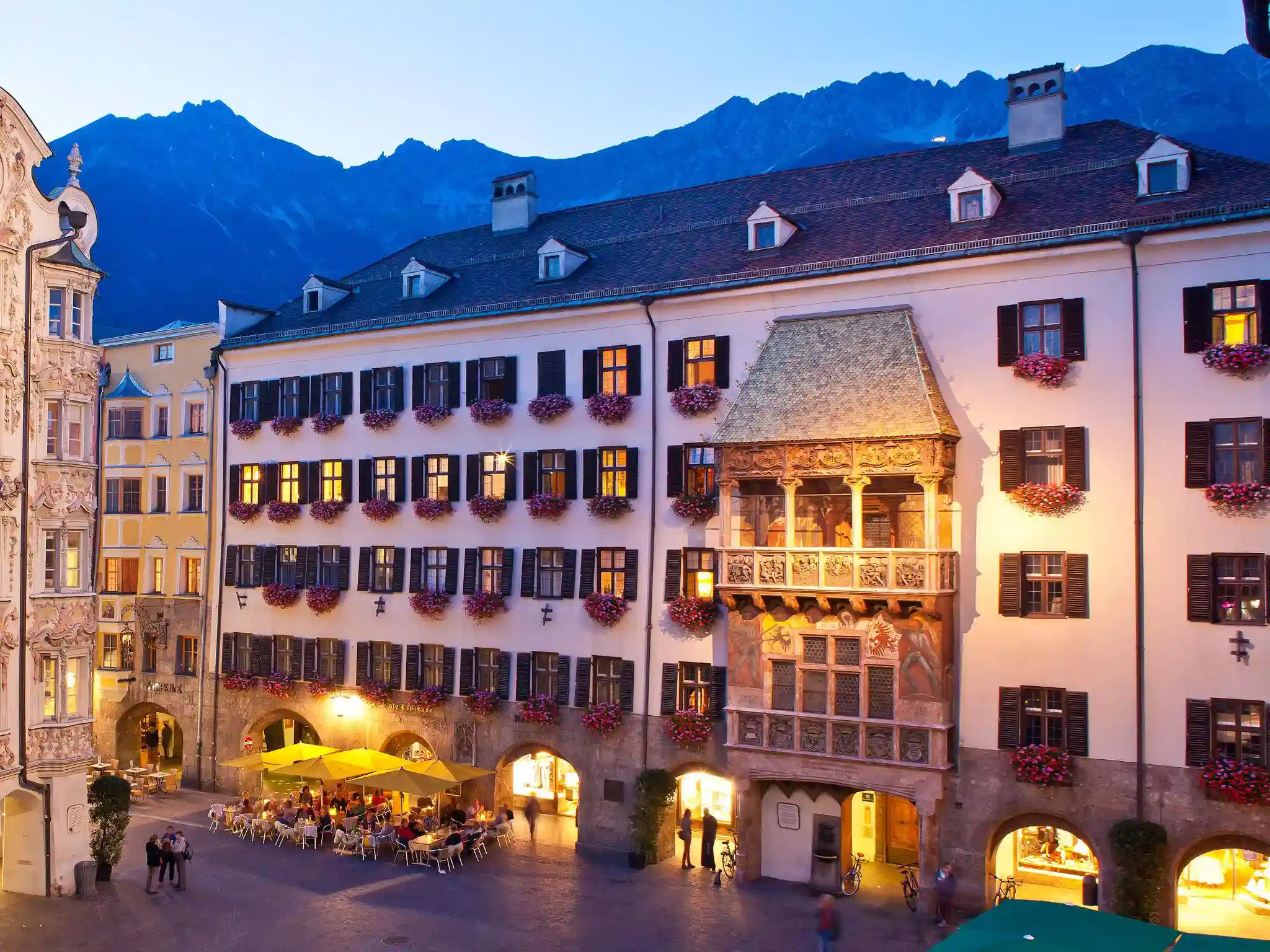
The building was constructed in 1420 by the Tyrolean sovereign as a residence, initially without the magnificent roofed window. It was Emperor Maximilian who expanded the building and constructed the Golden Roof as a symbol of his power.
From this balcony, it is said that the monarch enjoyed the view of his city, especially during festivities. He immortalized himself in reliefs on the window of the house, alongside his wife, Bianca Maria Sforza, and the court society, as well as by himself.
He aimed to display his wealth to his enemies. However, after his reign, the grand balcony fell into disrepair. The building served as an administrative building and even a barracks. With the advent of tourism in the 19th century, the Golden Roof was meticulously restored, becoming a masterpiece of Innsbruck's old town.
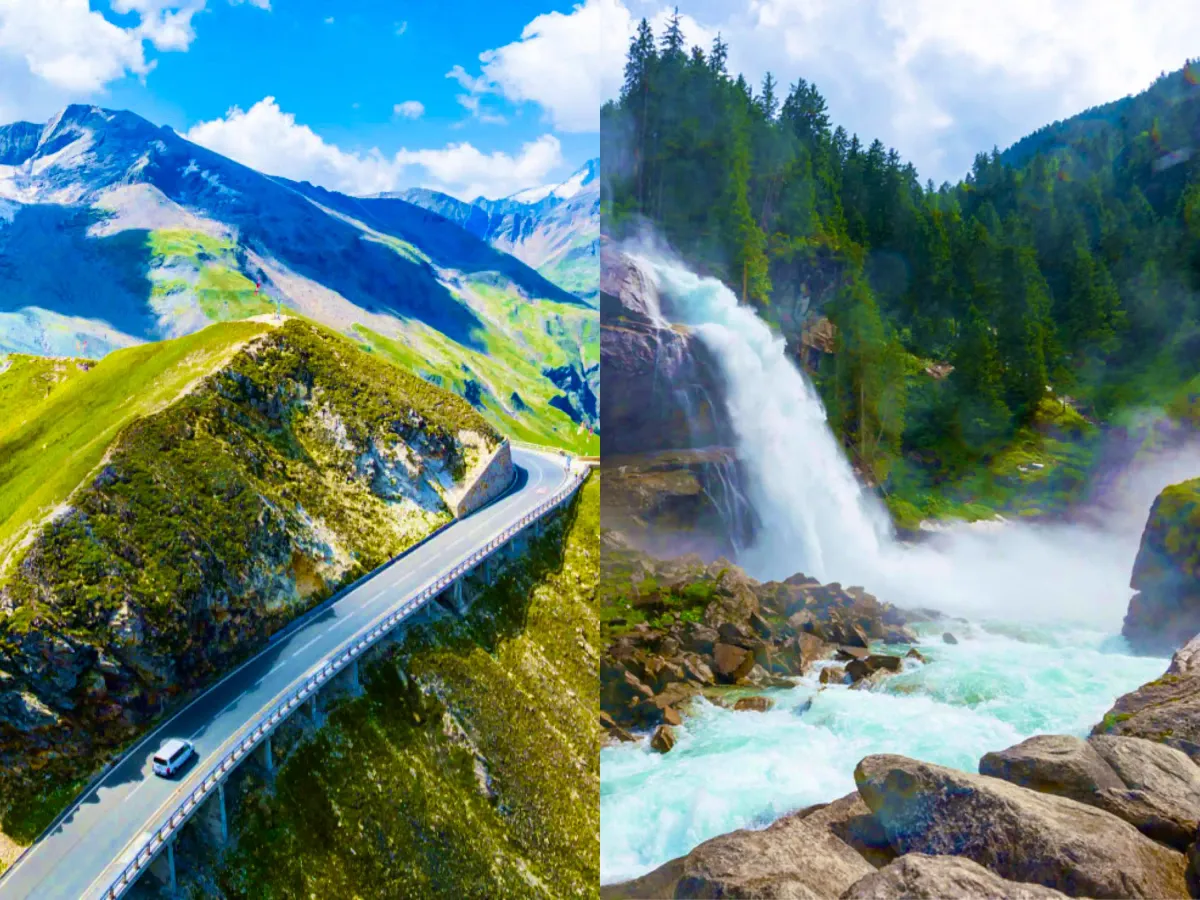
Today, the building houses a museum that showcases the history of the building, as well as exhibits about Emperor Maximilian I, open daily from 10:00 AM to 5:00 PM, closed on Mondays during the off-season from October to April.
The Golden Roof shines in all its splendor in the afternoon, so we arrived at the optimal moment for the best photographs.
Across from the Golden Roof, diagonally situated, is another building with a baroque design, as old as the others around it, built in the Late Middle Ages, named Helblinghaus.
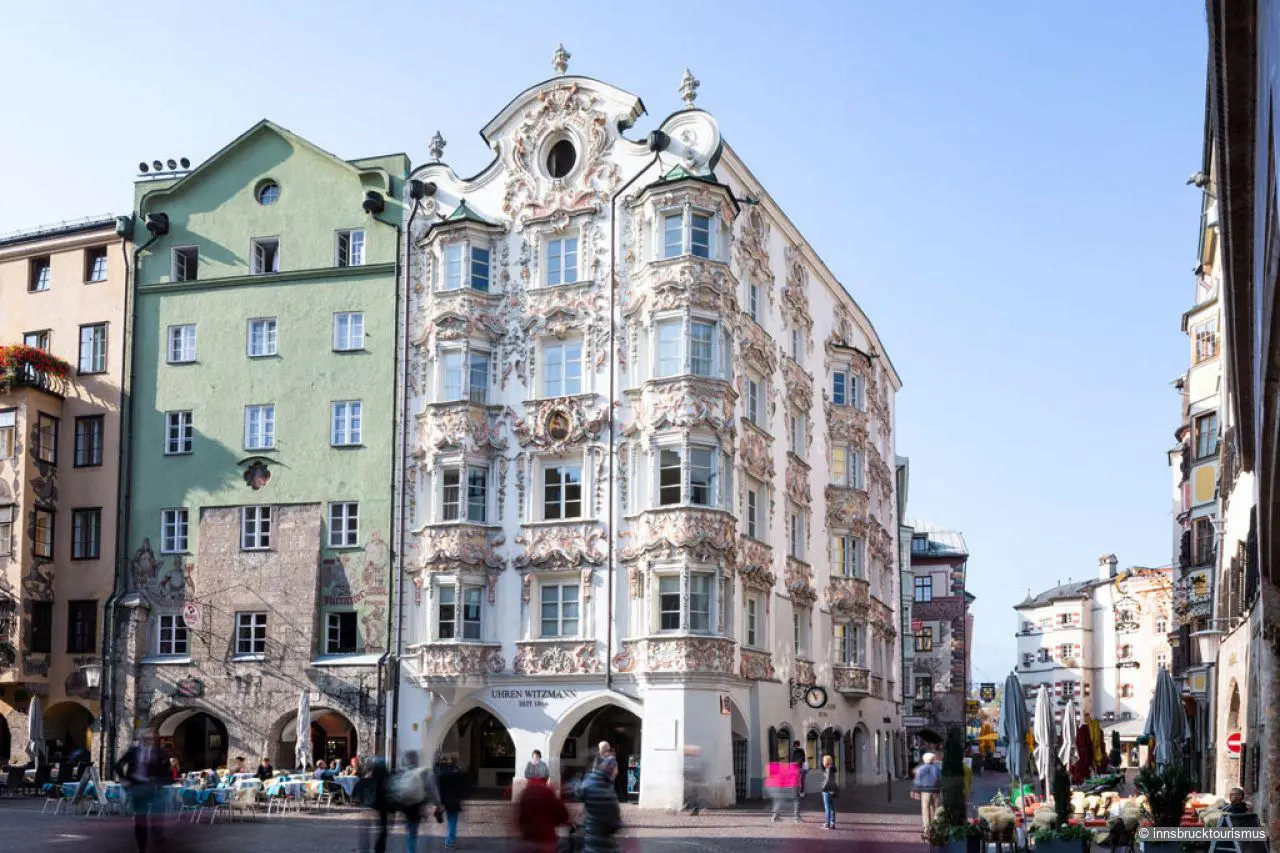
The walls and gables up to the fourth floor are covered with acanthus leaves, climbing plants, putti, masks, and many other motifs. The name of the building comes from Sebastian Helbling, who ran a café here in the 19th century.
Before acquiring the baroque decorations, the house was built in Gothic style. The house is privately owned, inhabited, and not open to visitors.
From here, we headed towards the Imperial Palace Hofburg, constructed at the end of the 15th century by Emperor Maximilian, and expanded and redecorated over time by other Austrian rulers. The "Rennplatz" square in front of the Imperial Palace served as a competition arena to please the sports-loving emperor.
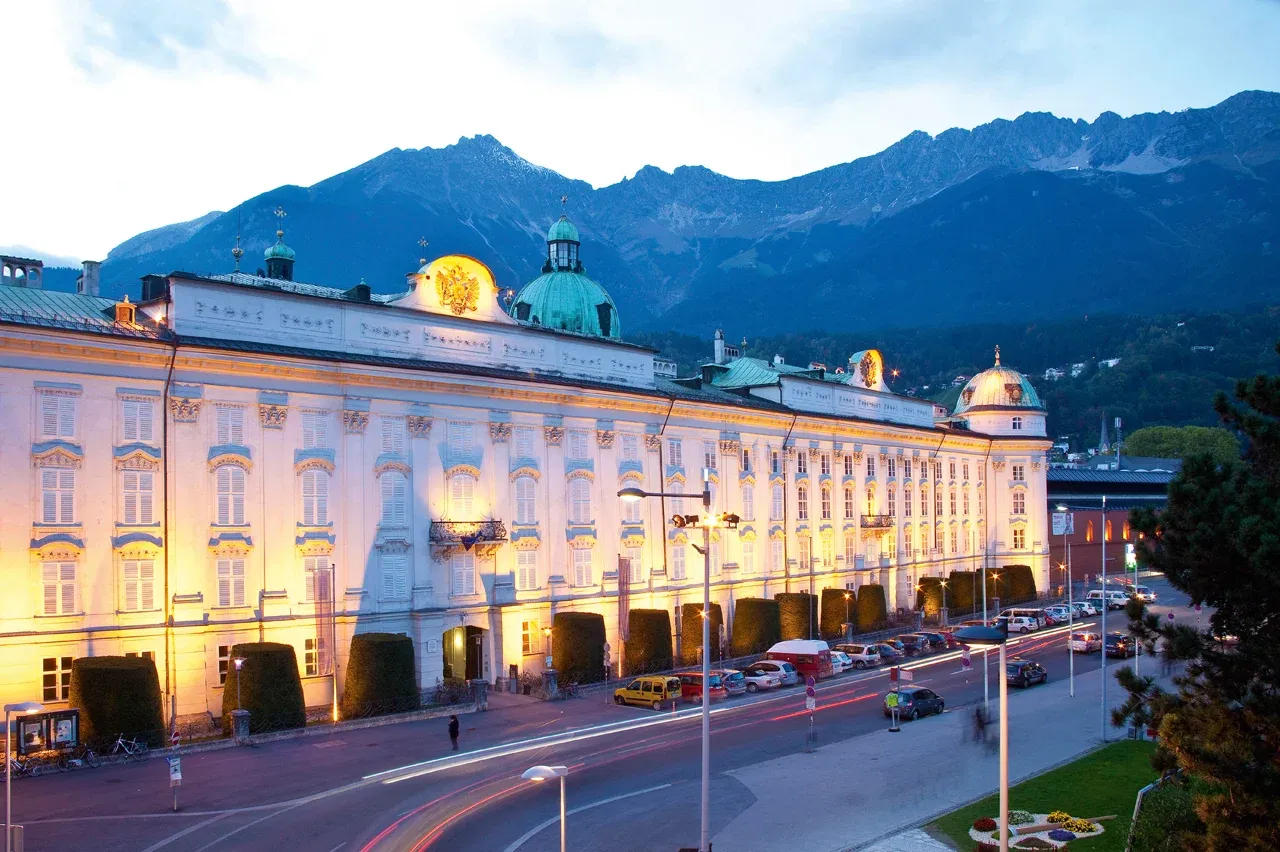
Empress Maria Theresa is the one who gave the already existing palace its monumental, baroque appearance today.
The monumental cathedral, which was part of the medieval Christian pilgrimage route, the Way of St. James, was severely damaged by earthquakes in the 16th and 17th centuries and was rebuilt in the baroque style between 1717-1724. The high baroque ceiling frescoes depict scenes from the life of St. James, and in the left wing is the tomb of Archduke Maximilian III.
In our walk, we also passed by the Tyrolean State Theatre, which has a 400-year history. Archduke Ferdinand Karl ordered the construction of the Opera Theatre opposite Hofburg; it was later meticulously renovated, and in 1844, it was demolished and rebuilt in the classical style.
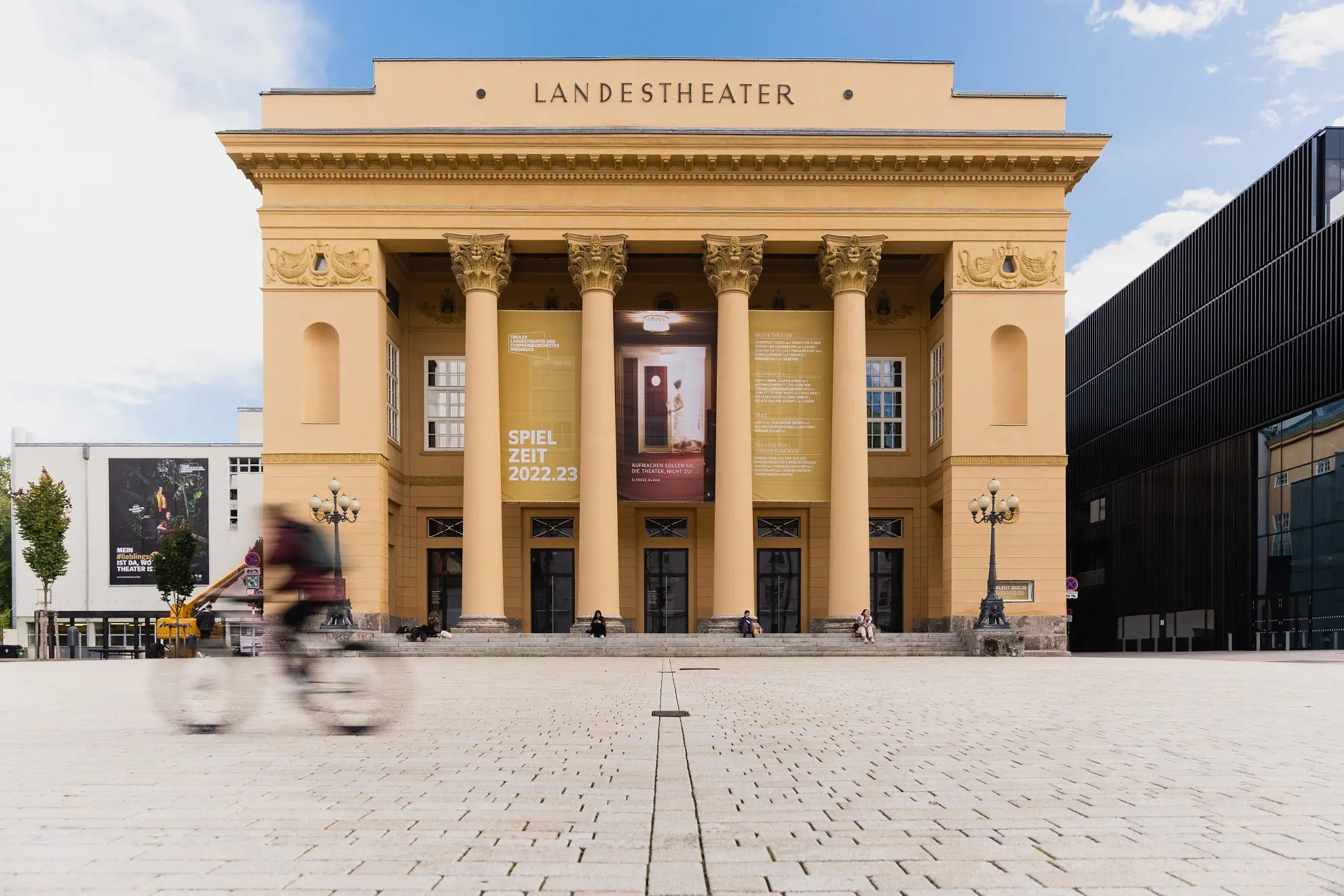
The last landmark in Innsbruck that we saw, albeit from a distance, from the car, is Bergisel, the 746-meter-high hill that hosts the ski jump, Bergiselschanze, which hosted the 1964 and 1976 Olympic Games.
Long before the Olympics, the hill became famous as the site of heroic battles in 1809 when the Tyrolean peasants repelled and forced the French and Bavarian occupation to retreat.
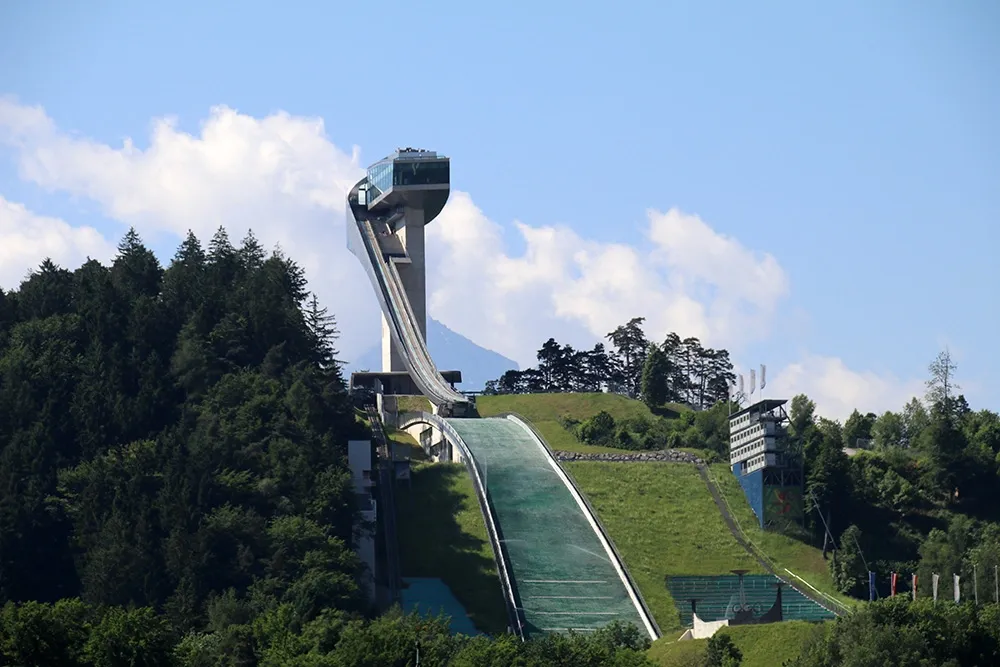
Today, it is one of the most modern ski sports facilities in the world, with over 28,000 seats for spectators and one of the important venues for the Ski Jumping World Cup, hosting annually the third competition of the prestigious Four Hills Tournament.
Thank you for reading and make sure to subscribe. We're constantly exploring new destinations and share our stories, tips, and the beauty we discover along the way.




